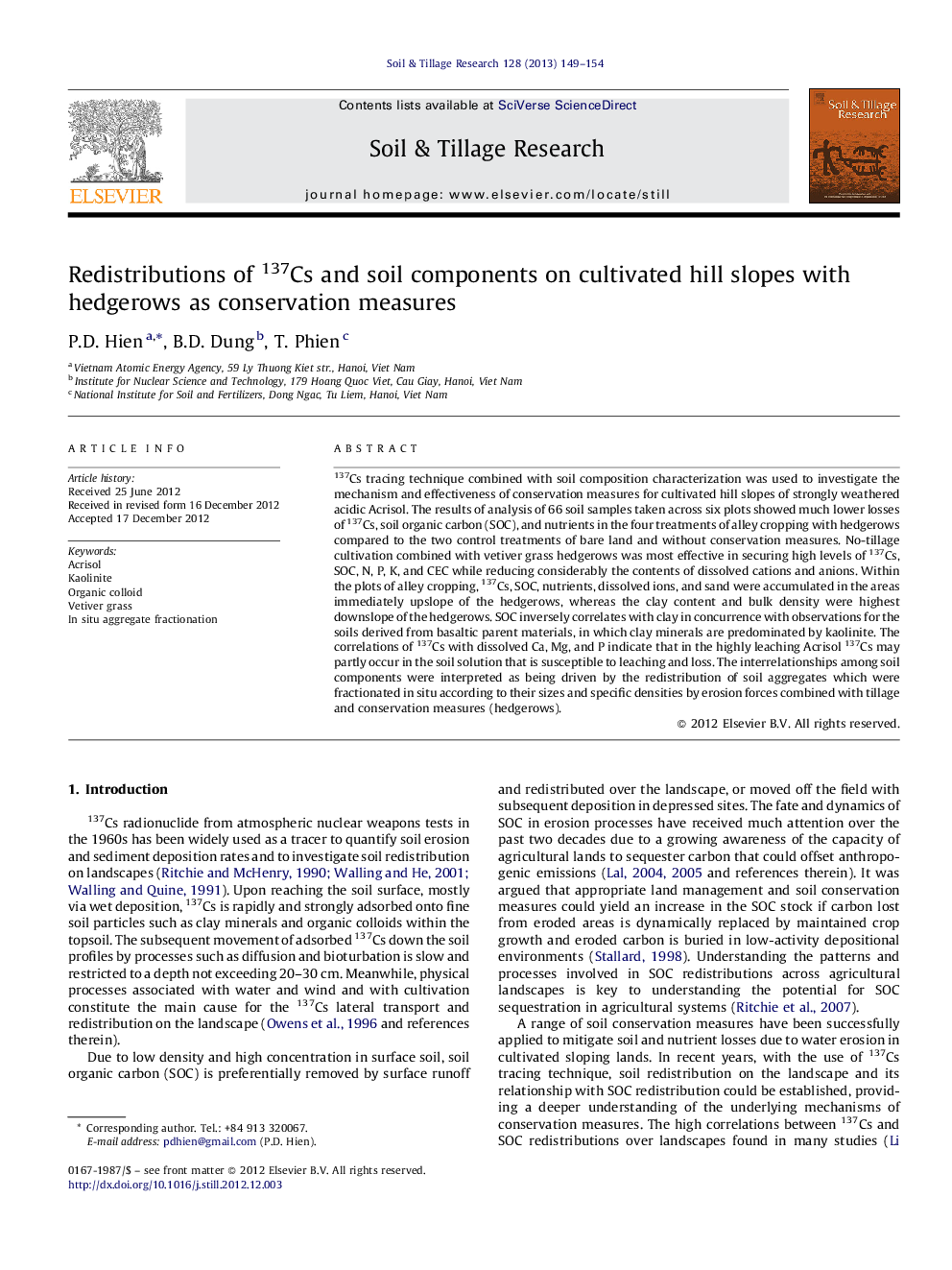| Article ID | Journal | Published Year | Pages | File Type |
|---|---|---|---|---|
| 305923 | Soil and Tillage Research | 2013 | 6 Pages |
137Cs tracing technique combined with soil composition characterization was used to investigate the mechanism and effectiveness of conservation measures for cultivated hill slopes of strongly weathered acidic Acrisol. The results of analysis of 66 soil samples taken across six plots showed much lower losses of 137Cs, soil organic carbon (SOC), and nutrients in the four treatments of alley cropping with hedgerows compared to the two control treatments of bare land and without conservation measures. No-tillage cultivation combined with vetiver grass hedgerows was most effective in securing high levels of 137Cs, SOC, N, P, K, and CEC while reducing considerably the contents of dissolved cations and anions. Within the plots of alley cropping, 137Cs, SOC, nutrients, dissolved ions, and sand were accumulated in the areas immediately upslope of the hedgerows, whereas the clay content and bulk density were highest downslope of the hedgerows. SOC inversely correlates with clay in concurrence with observations for the soils derived from basaltic parent materials, in which clay minerals are predominated by kaolinite. The correlations of 137Cs with dissolved Ca, Mg, and P indicate that in the highly leaching Acrisol 137Cs may partly occur in the soil solution that is susceptible to leaching and loss. The interrelationships among soil components were interpreted as being driven by the redistribution of soil aggregates which were fractionated in situ according to their sizes and specific densities by erosion forces combined with tillage and conservation measures (hedgerows).
